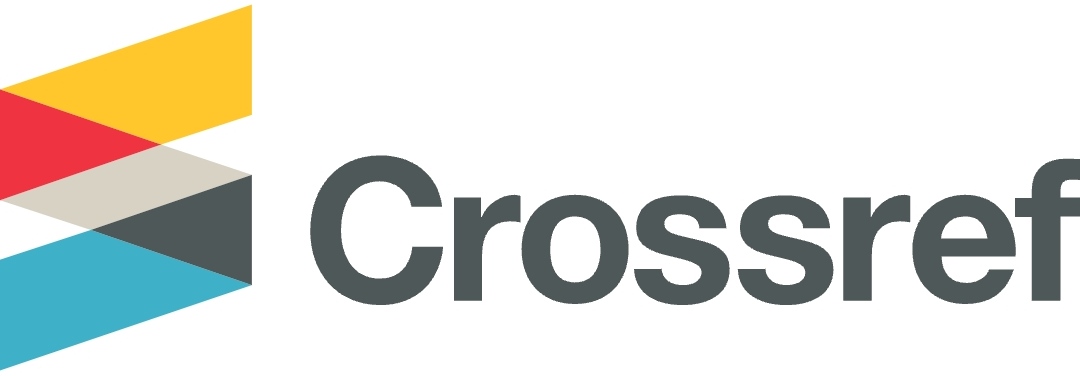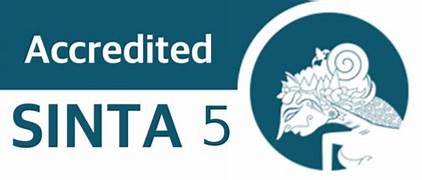An Interactive Multimedia Approach to Bilingual Worksheets for Optimizing Language Learning in Young Children
DOI:
https://doi.org/10.54180/joeces.v5i1.478Keywords:
Interactive Multimedia Approach, Bilingual Worksheets, Language LearningAbstract
This study examines the efficacy of an interactive multimedia method utilized in bilingual worksheets to enhance language acquisition in young children. This strategy incorporates auditory, visual, and kinesthetic elements, accommodating various learning styles and improving cognitive engagement. The research methodology entails an exhaustive evaluation of material, including existing studies, educational papers, and multimedia resources pertinent to bilingual language acquisition and interactive learning instruments. Research demonstrates that multimedia bilingual worksheets enhance vocabulary retention, pronunciation precision, and student motivation in contrast to conventional static worksheets. Challenges including technological accessibility and educator readiness are examined, along with practical ramifications for curriculum writers and instructors. This study offers significant insights into the transformative potential of interactive multimedia in early childhood bilingual education, enhancing inclusivity and efficacy in language acquisition.
References
Abedi, J. (2006). Psychometric issues in the assessment of English language learners: Implications for large-scale assessment. *Educational Measurement: Issues and Practice*, 25(3), 36–46. doi:10.1111/j.1745-3992.2006.00068.x
Al Umairi M. Development of Social Interaction and Behavior for Early Childhood Education in the Era Society (5.0). JOYCED J Early Child Educ [Internet]. 2023;3(2):167–76. Available from: https://ejournal.uin-suka.ac.id/tarbiyah/joyced/article/view/8019
Al Umairi M. Pengembangan Interaksi dan Perilaku Sosial Terhadap Pendidikan Anak Usia Dini di Abad 21. Kiddo J Pendidik Islam Anak Usia Dini [Internet]. 2023;4(2):274–80. Available from: http://doi.org/10.19105/kiddo.v4i2.9705
Bakia, M., Shear, L., Toyama, Y., & Lasseter, A. (2011). Understanding the implications of online learning for educational productivity. U.S. Department of Education. Retrieved from [https://tech.ed.gov/files/2013/10/implications-online-learning.pdf](https://tech.ed.gov/files/2013/10/implications-online-learning.pdf)
Bialystok, E. (2017). *Bilingual education and cognitive development*. Cambridge University Press.
Bialystok, E., Craik, F. I., & Luk, G. (2012). Bilingualism: Consequences for mind and brain. *Trends in Cognitive Sciences*, 16(4), 240-250. doi:10.1016/j.tics.2012.03.001
Black, P., & Wiliam, D. (1998). Assessment and classroom learning. *Assessment in Education: Principles, Policy & Practice*, 5(1), 7-74. doi:10.1080/0969595980050102
Chinnery, G. M. (2019). Emerging technologies: Interactive multimedia in language teaching. *Language Learning & Technology*, 23(3), 10-23.
Cooper, H. (2010). *Research synthesis and meta-analysis: A step-by-step approach* (4th ed.). Sage Publications.
Deci, E. L., & Ryan, R. M. (1985). *Intrinsic motivation and self-determination in human behavior*. Plenum.
De Houwer, A. (2009). *Bilingual first language acquisition*. Multilingual Matters.
Dizon, G. (2016). Teacher readiness in integrating technology into the language classroom. *TESOL Journal*, 7(3), 567–591. doi:10.1002/tesj.265
Epstein, J. L. (2001). *School, family, and community partnerships: Preparing educators and improving schools*. Routledge.
Ertmer, P. A., & Ottenbreit-Leftwich, A. T. (2010). Teacher technology change: How knowledge, confidence, beliefs, and culture intersect. *Journal of Research on Technology in Education*, 42(3), 255–284. doi:10.1080/15391523.2010.10782551
Fleming, N. D., & Mills, C. (1992). Not another inventory, rather a catalyst for reflection. *To Improve the Academy*, 11(1), 137-155.
Flick, U. (2018). *An introduction to qualitative research* (6th ed.). Sage Publications.
Fullan, M. (2007). *The new meaning of educational change* (4th ed.). Teachers College Press.
Gay, G. (2010). *Culturally responsive teaching: Theory, research, and practice* (2nd ed.). Teachers College Press.
Gardner, H. (1983). *Frames of mind: The theory of multiple intelligences*. Basic Books.
Genesee, F., Paradis, J., & Crago, M. (2020). *Dual language development and disorders: A handbook on bilingualism and second language learning* (2nd ed.). Brookes Publishing.
Holmes, W., Bialik, M., & Fadel, C. (2019). *Artificial intelligence in education: Promises and implications for teaching and learning*. Center for Curriculum Redesign.
Hohlfeld, T. N., Ritzhaupt, A. D., Dawson, K., & Wilson, M. L. (2017). An examination of digital equity in public schools: A national study of instructional technology environments and student achievement. *Computers & Education*, 115, 1-17. doi:10.1016/j.compedu.2017.06.004
Koda, K. (2007). *Reading and language learning: Crosslinguistic constraints on second language reading development*. John Benjamins Publishing.
Kozma, R. B. (2003). Technology and classroom practices: An international study. *Journal of Research on Technology in Education*, 36(1), 1-14. doi:10.1080/15391523.2003.10782389
Krippendorff, K. (2013). *Content analysis: An introduction to its methodology* (3rd ed.). Sage Publications.
Kuhl, P. K. (2004). Early language acquisition: Cracking the speech code. *Nature Reviews Neuroscience*, 5(11), 831-843. doi:10.1038/nrn1533
Livingstone, S., & Bulger, M. (2014). A global research agenda for children's rights in the digital age. *Journal of Children and Media*, 8(4), 317-335. doi:10.1080/17482798.2014.963336
Mayer, R. E. (2009). *Multimedia learning* (2nd ed.). Cambridge University Press.
Mayer, R. E. (2020). *Multimedia learning* (3rd ed.). Cambridge University Press.
Mechelli, A., Crinion, J. T., Noppeney, U., O’Doherty, J., Ashburner, J., Frackowiak, R. S., & Price, C. J. (2004). Structural plasticity in the bilingual brain. *Nature*, 431(7010), 757. doi:10.1038/431757a
Montrul, S. (2016). *The acquisition of heritage languages*. Cambridge University Press.
Maghfiroh L, Sidiq AM, Umairi M Al. Peran Ustadzah Thaharah Dalam Pembelajaran Toilet Training Untuk Menerapkan Perilaku Hidup Bersih dan Sehat Pada Anak Kelompok A di RA Perwanida Ketintang. 2024;2(2):53–62. Available from: https://ojs.unublitar.ac.id/index.php/bocil/article/view/1546
Mushab Al Umairi. Reinforcement terhadap Sosial Emosional Anak Usia Dini Di Era Society 5.0. IJECIE Indones J Early Child Islam Educ. 2024;5(2):45–97.
Nicol, D. J., & Macfarlane-Dick, D. (2006). Formative assessment and self?regulated learning: A model and seven principles of good feedback practice. *Studies in Higher Education*, 31(2), 199-218. doi:10.1080/03075070600572090
Norman, D. (2013). *The design of everyday things: Revised and expanded edition*. Basic Books.
Paivio, A. (1991). Dual coding theory: Retrospect and current status. *Canadian Journal of Psychology*, 45(3), 255-287. doi:10.1037/h0084295
Paradis, J. (2011). Individual differences in child English second language acquisition: Comparing child-internal and child-external factors. *Linguistic Approaches to Bilingualism*, 1(3), 213-237. doi:10.1075/lab.1.3.02par
Selwyn, N. (2011). *Education and technology: Key issues and debates*. Bloomsbury Publishing.
Sidiq AMMAU. THUFULI?: Jurnal Pendidikan Islam Anak Usia Dini Volume 4 Nomor 1 Tahun 2022 e-ISSN: 2658-161X. J Pendidik Islam [Internet]. 2022;4(1):21–8. Available from: https://riset.unisma.ac.id/index.php/thufuli/article/view/18943
Sidiq AMMAU. Social Development of Early Children in Online Learning in the Time of the Covid-19 Pandemic. IJECES Indones J Early Child Educ Stud [Internet]. 2022;11(2). Available from: https://journal.unnes.ac.id/sju/ijeces/article/view/57676
Sidiq AM, Umairi M Al, Salsabillah NI. Penerapan Metode Bercerita Menggunakan Boneka Tangan Untuk Mengembangkan Karakter Anak Pada Kelompok a. JP2KG AUD (Jurnal Pendidikan, Pengasuhan, Kesehat dan Gizi Anak Usia Dini) [Internet]. 2022;3(2):173–84. Available from: https://journal.unesa.ac.id/index.php/jt/article/view/20125
Sweller, J. (2011). Cognitive load theory. *Psychology of Learning and Motivation*, 55, 37-76. doi:10.1016/B978-0-12-387691-1.00002-8
Thomas, W. P., & Collier, V. P. (2002). A national study of school effectiveness for language minority students’ long-term academic achievement. Center for Research on Education, Diversity & Excellence.
Tomlinson, C. A. (2014). *The differentiated classroom: Responding to the needs of all learners* (2nd ed.). ASCD.
Voogt, J., Fisser, P., Good, J., Mishra, P., & Yadav, A. (2015). Computational thinking in compulsory education: Towards an agenda for research and practice. *Education and Information Technologies*, 20(4), 715-728. doi:10.1007/s10639-015-9412-6
Warschauer, M. (2003). Technology and equity: A comparative study of access and use. *Journal of Research on Technology in Education*, 36(4), 433-450. doi:10.1080/15391523.2004.10782431
Warschauer, M., & Healey, D. (1998). Computers and language learning: An overview. *Language Teaching*, 31(2), 57-71. doi:10.1017/S0261444800012970












